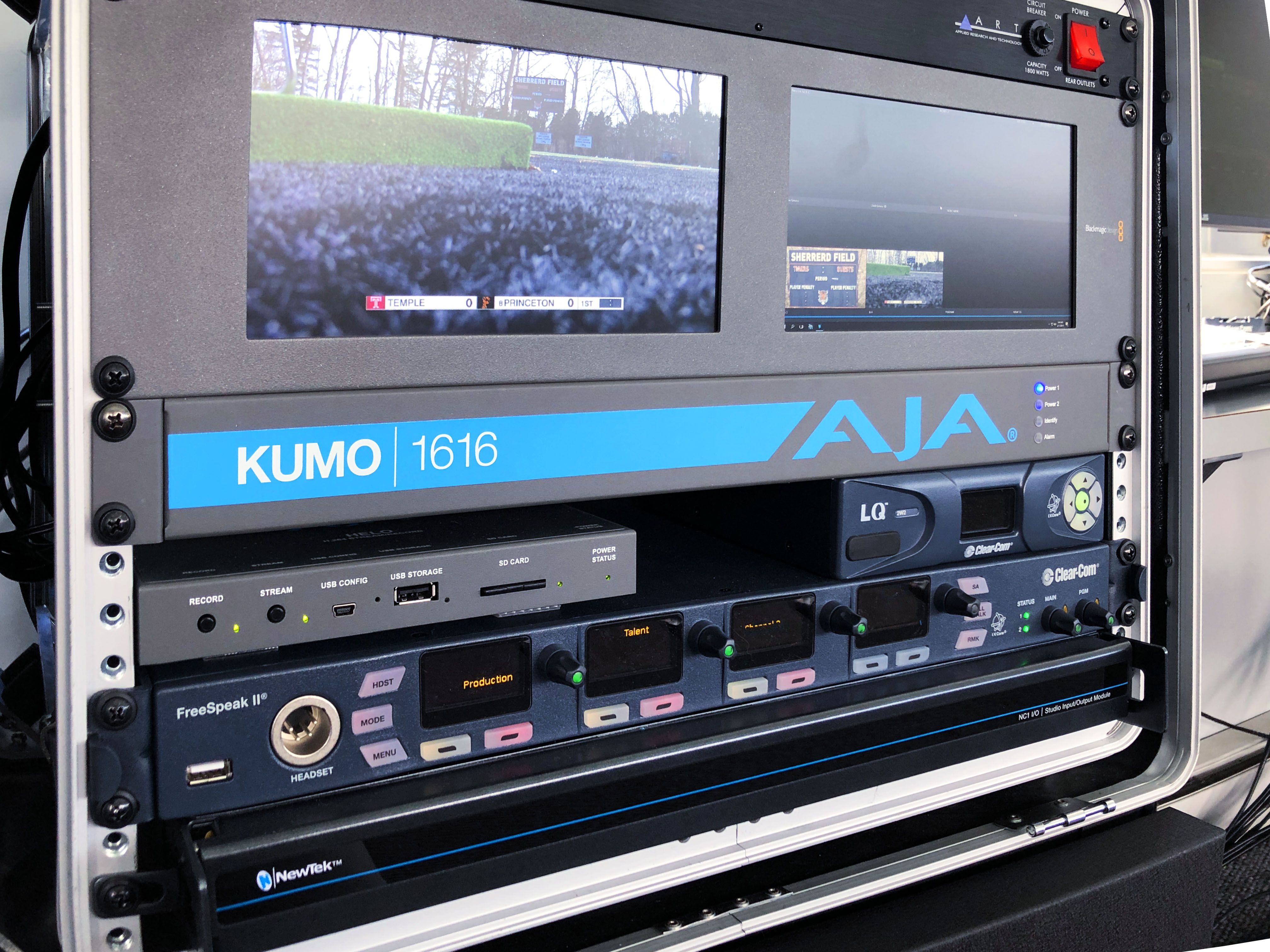Emerging live streaming technology and platforms are opening up new avenues for collegiate sports to reach a wider audience, and in this respect, Princeton University is ahead of the game. The video production arm of its athletics department streams home games for more than 37 sports to students, alumni, and international audiences via ESPN+, Stretch Internet, and NBC Sports Philadelphia.

Handling up to three separate destination feeds for more than 200 events a year, each with unique delivery requirements, is a heavy load to bear, but one that Princeton assistant director of athletics for multimedia and broadcasting Cody Chrusciel and partner John Bullis manage seamlessly. The duo spent the last six months ramping up their production infrastructure ahead of the 2019/2020 season—building two new control rooms, a flypack, and on-campus studio, with AJA gear powering routing, conversion, streaming, and recording. An additional control room and studio are slated to come online in Fall 2019.
Each production varies depending upon the sport. For football and basketball games, an OB truck will typically feed 1080p and 720p camera signals over fiber through AJA FiDO Mini-Converters to SDI and into an AJA KUMO 1616 3G-SDI router and output to their replay system and switcher for videoboard shows. AJA’s standalone HELO H.264 real-time recording and streaming device receives the 1080p switched feed for streaming over RTMP for the Stretch Internet stream. 1080p and 720p feeds of the game are also fed through another KUMO 1616 router to various encoders for the ESPN+ stream, an NBC sports Philadelphia stream for select games and to laptops for the home and away team. A similar workflow is applied for other sports productions, but the main feed is taken from Princeton Athletics’ switcher output.
Between the two control rooms, studio, and flypack, Princeton has three AJA KUMO 1616 routers, two AJA HELO streaming device, and numerous AJA FiDO Mini-Converters. AJA’s web-browser UIs have made it possible to work on multiple productions simultaneously and to route sources between feeds whether ESPN+, the video boards, Stretch Internet, and more.
“KUMO has helped us network our workflow and make changes on the fly,” Chrusciel said. “With a few mouse clicks we can control all of our routers from the web UI and change how sources are routed; it’s as though we can be in multiple places at once, which is invaluable when your production team consists of two. And with HELO, rather than typing in multiple RTMP addresses as we go between sports productions, we can use the web UI to set up and test presets for all of the sports feeds we’re distributing, eliminating room for human error.”
Every recording is also archived so that footage is available to use when compiling interstitials used for future halftime shows or marketing materials, and HELO provides the duo with a simpler storage solution and tighter file sizes. “At the same time as we stream, the HELO lets us also record to an SD card, which is incredibly convenient for post,” Chrusciel said. “Most encoding and streaming devices only allow you to record at the same bitrate that you’re streaming, but HELO is unique in that we can stream at 5Mbs and record at 15Mbs, which is great for a high-quality archive, and more manageable file sizes than we’re used to. It gives us so much more flexibility.”
With AJA gear at the center of the department’s workflow, Chrusciel never worries about making changes or downtime. “The web UIs on our AJA gear make it so easy to tweak or adjust our feeds for each stream, and we know that the equipment will work every time; it’s that reliable,” he said.